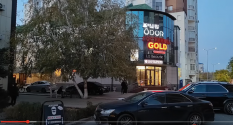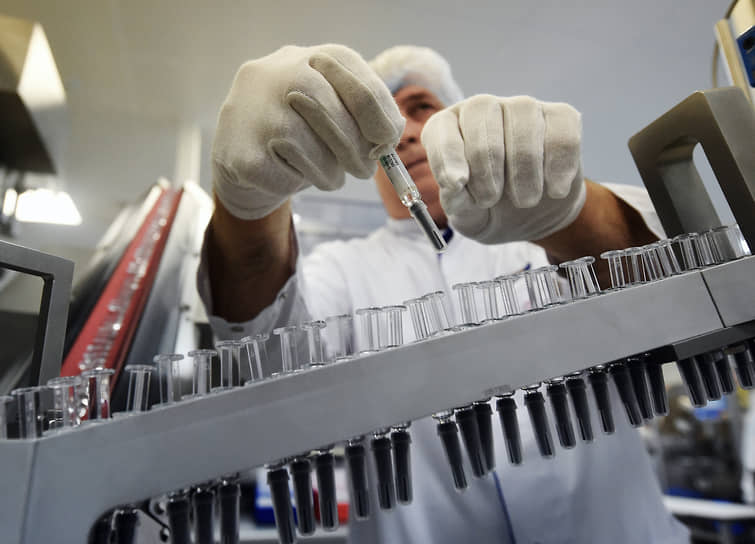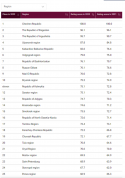Materials for microelectronics
raw diamond production.
One speck of dust per trillion molecules: TSU scientists are developing technology for producing extremely pure materials for microelectronics
Viktor Sachkov, head of the Engineering Center for High-Purity Substances and Materials for Microelectronics:
Thus, all substances that are used in modern microelectronics during their manufacture are subject to special requirements - not only for the content of the main chemical substance, but also for insoluble by-products. With the same water, this is the purity level PPQ (particles per quadrillion), that is, the permissible content of impurities is one speck of dust per 10 15 .
The technologies for producing such super pure substances are also special. Starting with the fact that they can only be produced in especially clean rooms, where all parameters are strictly controlled. Now we are equipping this in the laboratory building of the SFTI, the total area of the room is about 200 sq.m. These are complex transformational transformations of the entire workspace.
What exactly will they do in the “clean room”?
There are many microelectronics manufacturers in Russia. The nuance is that many of them have worked for decades using imported raw materials and materials. During the Soviet Union, there were our own production facilities, quite strong, but in the 1990s they were, so to speak, lost. And now the state’s priority task is to restore the domestic raw material base, from which components will later be made.
The first part of the problem is the direct extraction of raw materials, so the Ministry of Industry and Trade and the Ministry of Natural Resources are rapidly putting into operation previously mothballed deposits and conducting additional exploration. There are rare earth elements, lithium, tungsten, molybdenum, and many other elements.
On the other hand, the issue of own production technologies is acute. The country's leading scientific teams, including those from Tomsk, have been involved in their development. In particular, the Ministry of Industry and Trade set the task of obtaining high-purity hydrogen bromide and tetrakis-dimethylaminotitanium before TSU (and the Engineering Chemical Technology Center (ICHTC) as the main contractor). Both compounds are used in semiconductor microelectronics technology and have specific consumers among Russian enterprises. In the future, teams of scientists will work on the synthesis of other strategically important substances for microelectronics.
Viktor Sachkov:
Our task is to develop all analytical methods, basic laboratory and technological regulations and provide initial data for the design and launch of industrial production . This requires special equipment, analytical equipment, which must be located, again, in clean rooms. After all, how can you assess the purity of a substance, even with the most modern instrument, if you conduct this analysis in a “dirty” room?.. Our clean rooms will be organized in accordance with ISO requirements, the university has purchased a specialized ISP-MS spectrometer, which is suitable for analyzing such product quality. All equipment will arrive by the end of the year, and the clean rooms will be operational by March 2024.
What's happening now?
According to Viktor Sachkov, laboratory samples of the necessary substances have already been received. While there is no clean room, scientists work in special boxes that ensure a certain level of cleanliness of the process.
Viktor Sachkov:
In addition to the fact that we need to develop technology, we must adapt it to our Russian raw materials. This is a huge amount of hard work, requiring our team to consolidate all our strengths and capabilities of the existing laboratory, technological and analytical base.
We received all the main domestic raw materials available by the end of July, and now we have almost developed analytical methods that allow us to assess their quality and suitability for microelectronics tasks. It is interesting, by the way, that the same bromine in Russia is found in only two places - in Crimea and Perm.
At the same time, we have assembled laboratory installations and will build larger versions of them in clean rooms. Industrial installations will already be located at the IHTC site on the Kuzovlevsky tract, in a full-fledged production facility, which is also currently being designed.
In general, within the framework of the Engineering Center for High-Purity Substances and Materials for Microelectronics, created this year, we must formulate a general global strategy that will include educational, scientific, and partly production components. TSU has very strong competencies of ceramists, microelectronics physicists, and chemists, and all of them will be linked into a common structure for the development of the country's security technologies.
raw diamond production.
RIA Novosti: Russia has occupied more than a third of the world diamond market
At the end of 2022, Russia occupied more than a third of the global diamond production market. Europe and the UAE became the leaders in exports, RIA Novosti reports.
According to the Kimberley Process (a 2003 certification system to prevent the flow of rough diamonds from conflict zones into world markets), the world produced 119.96 million carats in 2022. Of these, 41.9 million were in Russia, accounting for 35% of the market. Before this, Russia’s share in world diamond production until 2022 did not exceed 33%.






